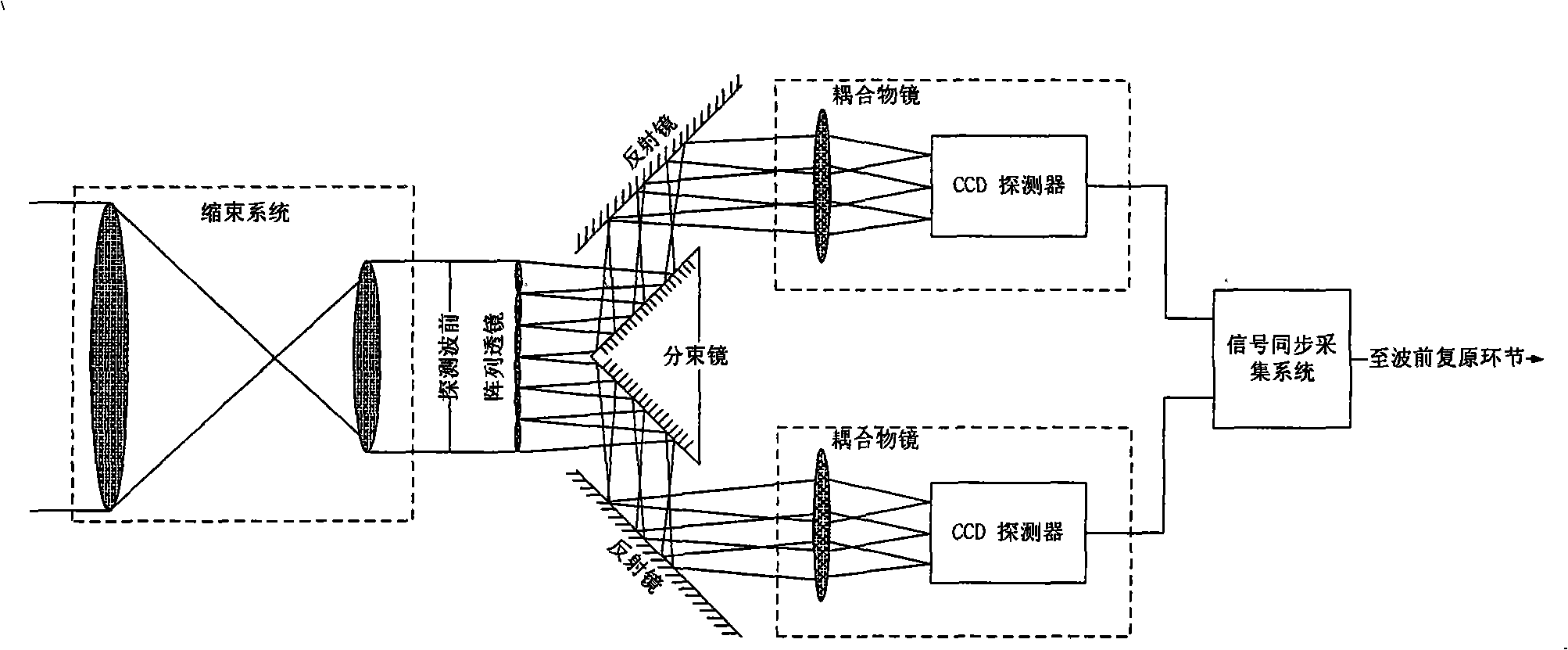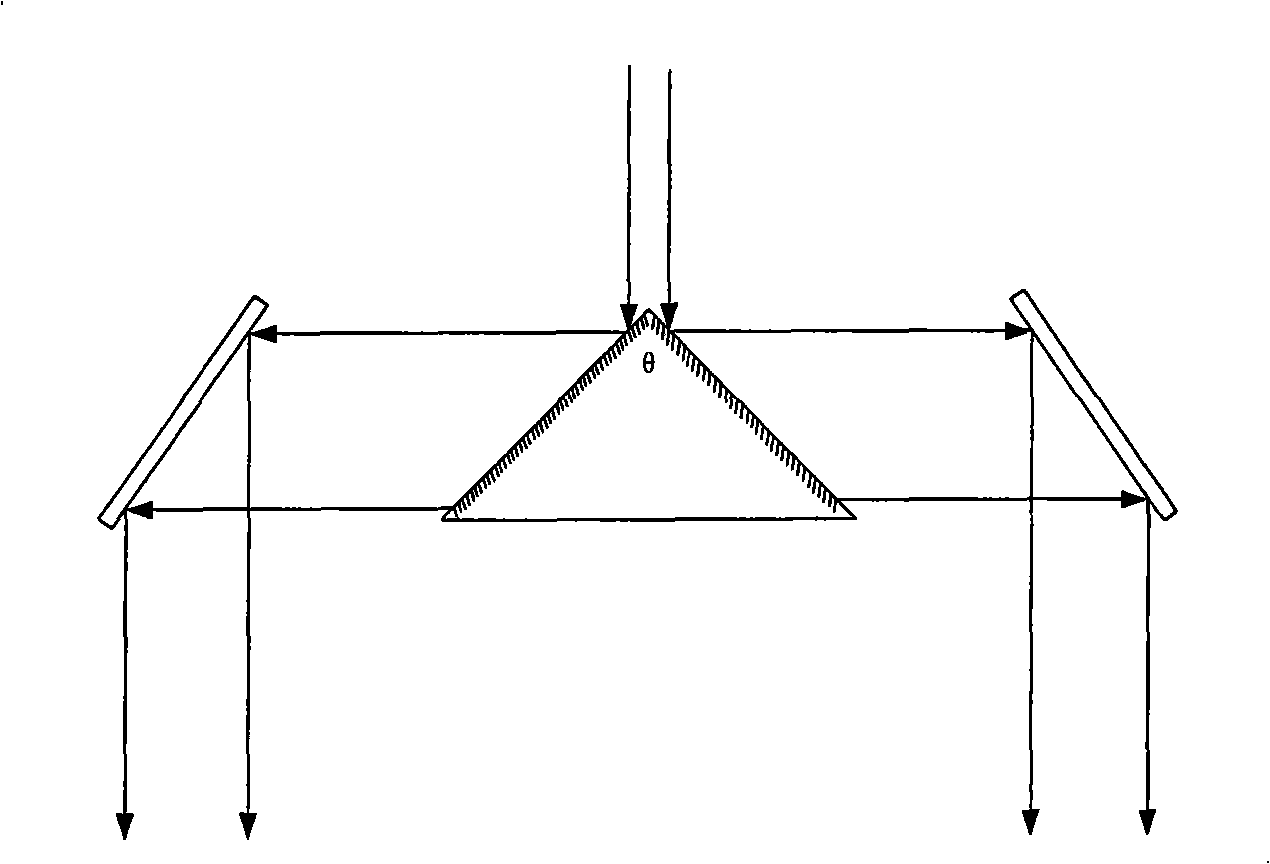Shack-Hartmann wavefront sensor of self-adapting optical system
An adaptive optics and sensor technology, applied in optics, scientific instruments, measurement optics, etc., to reduce technical difficulty, expand wavefront detection capabilities, and ensure reliability.
- Summary
- Abstract
- Description
- Claims
- Application Information
AI Technical Summary
Problems solved by technology
Method used
Image
Examples
Embodiment Construction
[0029] The present invention will be described in detail below with reference to the drawings and specific embodiments.
[0030] The Shaker-Hartmann wavefront sensor used in the adaptive optics system of the very large-aperture astronomical telescope in this embodiment is such as figure 1 As shown, it consists of a beam reduction system, an array lens, a beam splitting system, two sets of coupled objective lenses, two sets of CCD detectors, and a set of signal synchronization acquisition system. In this embodiment, the beam splitting system is composed of a beam splitter and two mirrors, and the detection wavefront is spatially divided into two sub-regions. Each sub-area of the detection wavefront is detected by a CCD detector with a smaller number of pixels, and the signal synchronization acquisition system synchronizes the acquisition and processing of the signals of the two sets of CCD detectors.
[0031] The array lens is a necessary component of the Shaker-Hartmann wavefro...
PUM
 Login to View More
Login to View More Abstract
Description
Claims
Application Information
 Login to View More
Login to View More - R&D
- Intellectual Property
- Life Sciences
- Materials
- Tech Scout
- Unparalleled Data Quality
- Higher Quality Content
- 60% Fewer Hallucinations
Browse by: Latest US Patents, China's latest patents, Technical Efficacy Thesaurus, Application Domain, Technology Topic, Popular Technical Reports.
© 2025 PatSnap. All rights reserved.Legal|Privacy policy|Modern Slavery Act Transparency Statement|Sitemap|About US| Contact US: help@patsnap.com



